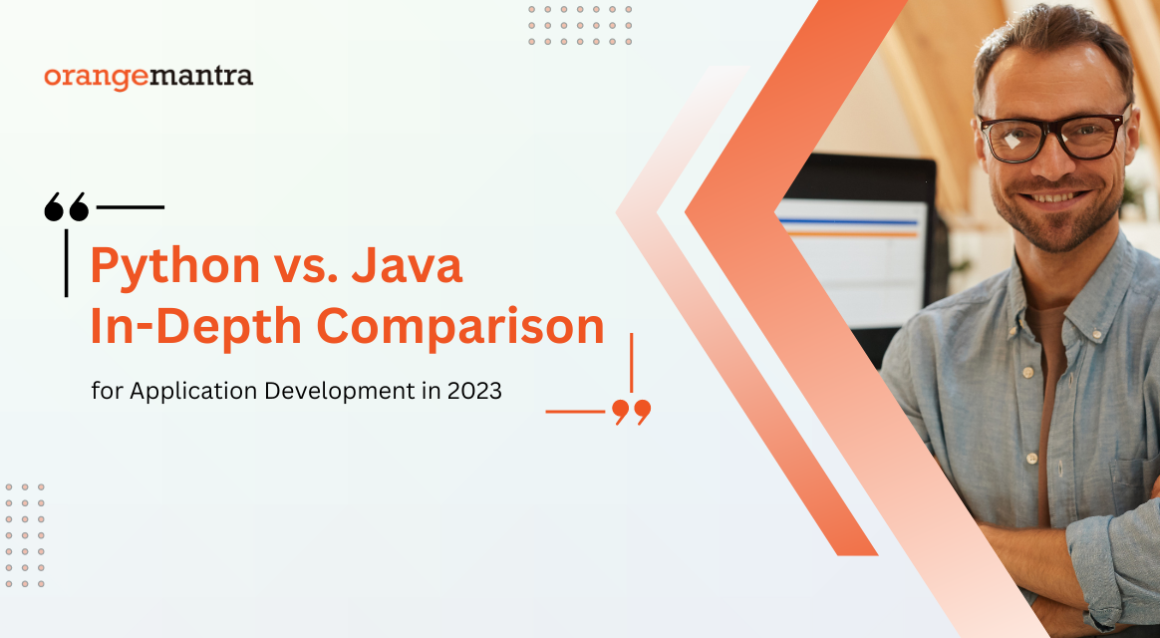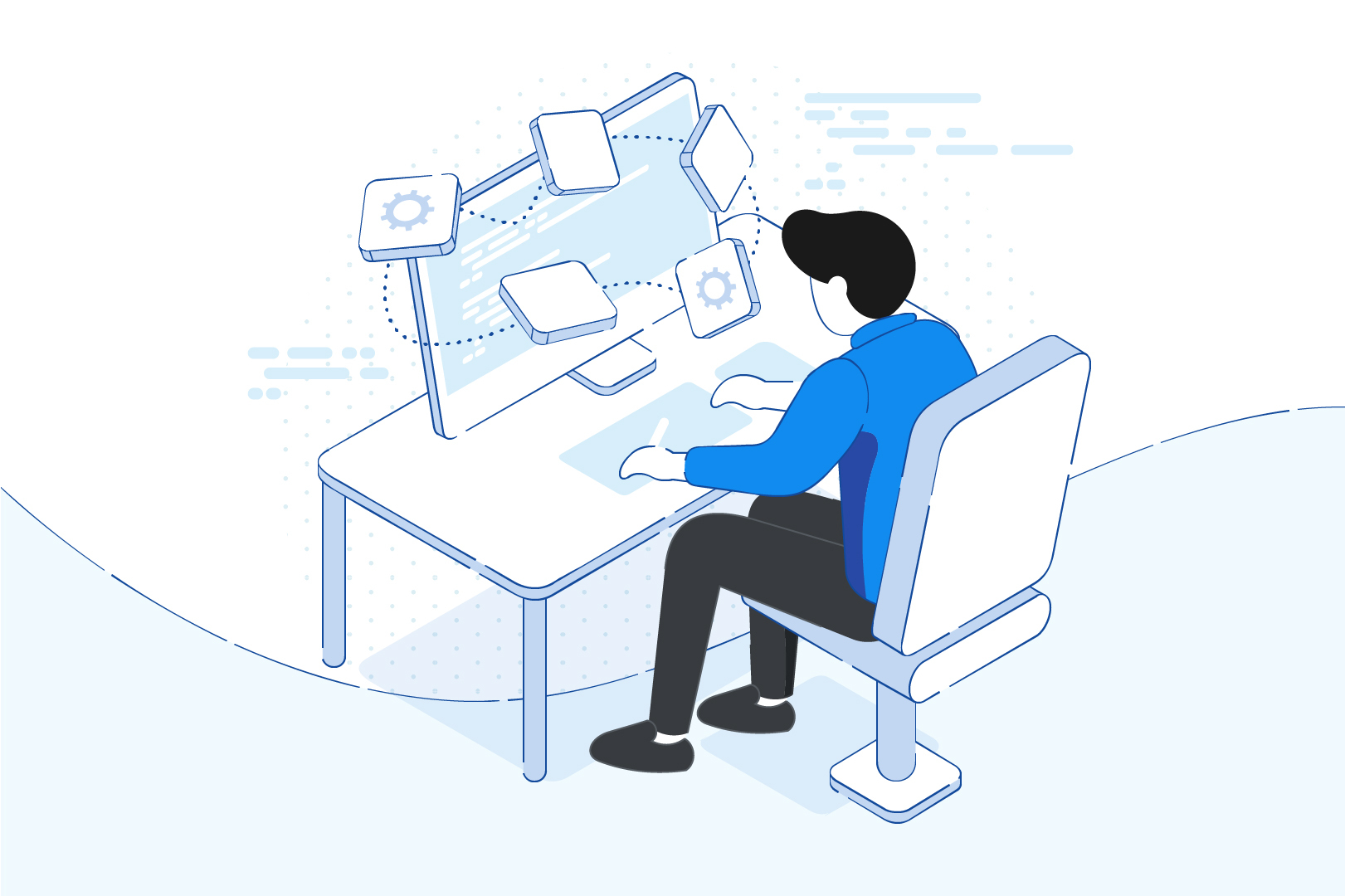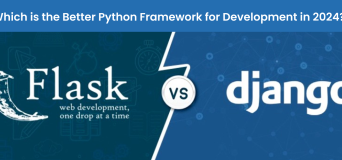Having a digital presence to stay competitive in the modern and competitive world is a necessity. Business enterprises look for application development to expand their reach and engage prospects. For application development, different programming languages are available in the market. Programming languages are an integral part of software development.
Here, we are discussing Java vs Python for better understanding and smart selection for development work. Both languages offer remarkable potential but to start application development a choice needs to be made.
Are you also facing dilemmas about which language is a better choice? This post is perfect for your understanding what are the differences between Python and Java. Let’s dive deeper to know the key differences.
Java and Python have long engaged in a battle to establish themselves as the more dominant player in the software industry. This conflict is made more interesting by the constant evolution of the programming languages. Then there’s the pivotal role of the ‘commanders’ of this battle: software developers.
In this blog, we’ll try to understand the dynamics of the Java vs Python conflict (without participating in the battle itself!).
Threats to Java’s popularity grew with the rising demands of services like Python web development. With its fast-evolving features, Python is trying to provide developers a hyper-efficient development platform. Even so, Java is not behind in the race. Its legacy and the vast world of libraries make it a preferred platform. Let’s have a look at the top features of Java and Python first.
Introduction to Java
Java needs no introduction as it is one of the oldest programming languages. It is serving businesses for the last 3 decades with its secure and innovative features. Being an object-oriented language, it shares similar syntax to C & C++ language. Developers prefer it because of its WORA feature of using compiled code on different platforms. The language can be integrated with emerging technologies like AI/ML for building next-gen applications. All of these together make Java development a service always in high demand.
Introduction to Python
Python is also an object-oriented language integrated with a large array of libraries for enterprise application development. It has functionality that makes usage of different algorithms simple for advanced applications.
The presence of simplified syntax aims to help developers to write clear, logical code for different projects. Many recognized brands like Intel, Infosys, IBM, and Spotify are already availing services of Python development company to improve business operations. They are professional with their development work and deliver project within the deadline.
Key Differences Between Java vs Python
1. Popularity
Popularity is an important factor when choosing between Java vs Python. With the popularity chances of getting regular security updates, and official support becomes high. Both languages are popular among their respective user bases. With the presence of JavaScript, the fight has become more intense.
In a 2018 survey of Stackoveer’s, Python was considered the fastest-growing programming language beating C++. Many developers at that time too considered Java a popular choice.
In 2021 GitHub’s survey revealed Java was more popular than both C++ and Python. Even though the difference in popularity has reduced in the last few years between both languages. When comes to popularity, Java has its lead over other languages.
2. Syntax
Python is a dynamic language thus developers don’t have to manually enter variables. This ultimately saves time and boosts development speed. Variables are input at the time of runtime and appear like the English language.
Python has no restrictions related to indentation rules or enclosing braces. This helps beginners to easily learn the code and make customization. Furthermore, it becomes simple to create pseudocode which is a beginner-friendly program, not possible with Java.
Java is the opposite when comes to syntax structure and its presentation. It follows a strict syntax structure, where all the variables are manually entered. It results in human code errors, stopping the program to run.
Java needs curly braces when developers need to define a block having multiple lines of code. Whereas, with Python no need to use curly braces as it supports indentation to write blocks.
Java follows strict syntax rules thus not very beginner friendly. Python development depends on how the developer writes the code. If a developer implements indentation rules, it is well with Java. Python is perfect when a developer wants to keep the code simple without any variables and complexity. Therefore, when comes to syntax, you can hire Python developers to simplify the development work with proper understanding.
3. Performance
Performance is a vital parameter when choosing between Java vs Python programming languages. Both languages compile byte code to run them on virtual machines. Having the feature of cross-platform functionality, no operating system-related differences are present. Many consider both to have similar performance, but differences are present.
Java implements static-typing syntax, making compilation work simple and fast. Less number of errors are observed during the compilation work. With the presence of a Just-in-time (JIT) compiler, it compiles the code into the existing device. This is a great way to speed up language efficiency.
When we talk about Python, the code is processed at the compile time, and this is where the variables are focused. The code created in dynamic-type syntax isn’t that agile to go with every available platform in the market.
One major limitation of Python is its testing during the runtime. When experiencing any error with the program code, the application becomes on hold. This results in sluggish performance and reduced application efficiency in the long run.
4. Machine Learning
Machine Learning (ML) has become an integral part of programming languages. It is an essential tool to derive insights from a large volume of data by making predictions. In some situations, its implementation is challenging, because of the diverse requirements set. Let’s see how the Machine Learning library can be implemented in Java or Python for futuristic application development.
Python is easy when comes to syntax, and therefore naive users prefer it for creating applications for different industry niches. Python developers found it easy to customize machine learning features and make the best use of them. This is how the Python development company encouraged the adaptation of ML by different industry niches. ML offers a vast library and tools that are easily accessed and customized further.
Java is also popular among brands when looking for ML-related functionality. With features like easy debugging and fast execution, enterprise-related applications are best to build. Weka, and Mallet, are popular libraries to use with Java.
Many experts found Java a bit annoying because of its complex syntax architecture, however, it is still the most used language for next-gen applications. Therefore, for Machine Learning features, Python is your best option to consider. Java is good as well but lacks some key features for ML integration.
Features
Both programming language are known for their amazing set of features. But the feature set depends on your business requirements and application you’re looking to build.
When Is Python Recommended?
Python is recommended when looking to build applications focused on the graphical user interface (GUI). The most common applications include games and image-processing solutions. In addition, developers can utilize it for language development, business-focused application, prototypes, and other solutions.
When Is Java Recommended?
Java is a great language to use for building large systems. Such systems involve software interacting straight with the hardware. Java is a middle-level language, and thus works perfectly to create systems requiring complexity including web servers, application servers, and other products.
Major Advantages of Programming in Java
Easy to learn
Java is easy to use by design. Hence it’s easy to write, compile, debug, and learn than most of the other coding languages. Programmers can easily become proficient in Java and write high-quality codes.
Platform independent
Java can move easily from a software platform to another. This ability to execute the same program on many different platforms is critical to areas like web development.
The cross-platform nature enables programmers to write one code and run it across desktop, mobile, and embedded systems.
Object-oriented coding
The object-oriented nature of Java allows developers to create modular programs and write reusable codes. This saves lots of efforts and time, improving the productivity of the development process.
Highly Stable
Java is a mature language that has immensely evolved over the years. Hence it’s more stable and predictable. The stability of the coding language allows developers to produce desired results in Java app development.
Community Support
Being one of the most popular languages in the software industry, and across enterprises, Java has a large active community. This community of Java developers engage in discussions and share updates. The community support helps developers easily solve complicated problems
What Makes Python an Unstoppable Competitor of Java
Python is a general-purpose coding language. It is dynamically typed. The language was first released in 1991 with a design philosophy of code readability and use of whitespace. The programming language gives developers an object-oriented approach aided with clear and logical code. Today, Python app development is a fast-growing vertical in the software development industry.
Remarkable Advantages of Using Python for Coding
Diverse support libraries
The Python programming language provides extensive support libraries covering areas like internet protocols, string operations, Python web development, and operating system interfaces. These libraries provide the base codes for many complicated programming. So the coders don’t have to write such codes from the beginning.
Third-party modules
A number of third-party modules are available with the Python Packaging Index. This makes the language capable of interacting with other programming languages and development platforms.
Excellent readability
Python is completely uncluttered, readable, and has an easy-to-learn syntax. Python’s coding style guidelines provide a set of general rules and best practices to efficiently facilitate the formatting of codes.
Organized data structure
Python has an in-built list and dictionary data structures. These make it easier for developers to rapidly construct runtime data. Besides, Python also lets developers use dynamic, high-level data typing that reduces the length of support code.
Fast Development
With its clean, object-oriented design, Python enables an exceptionally fast development process. It provides enhanced process control, strong integration, code processing, and efficient unit testing. These factors, together, result in a higher speed and productivity. Therefore Python is often preferred for multi-protocol application development.
Comparing Key Features of Java and Python
Platform Architecture
The programming language relies on the Java Virtual Machine for the runtime environment. JVM converts the Java bytecode into coding languages that can be compiled during code execution. This mechanism creates a great architectural experience for Java developers.
In Python language, the interpreter translates the source code into machine-independent bytecode. The bytecode file is then stored in some other folder for future operations. When programmers run the same program, Python deploys the bytecode without translating it again.
User-friendliness
Python follows a dynamic programming model. Hence the codes are shorter and easy to learn. This makes the language immensely popular among developers.
Although Java is also easy to write, compile, and debug, Python gets the advantage of more being more dynamic than Java.
Readability of code
The coding format of Python is linear and less dispersed than Java. Python also provides coding style guidelines that make the programming process neat and systematic. This provides Python a great advantage over Java.
Scope of development
Java is mainly used for developing desktop GUI apps, embedded systems, web applications, mobile apps, middleware solutions, and enterprise software applications, among others.
Python is preferred for building image processing and graphic design apps, AI and machine learning solutions, operating systems, web frameworks, web apps, and prototyping, among others.
Market popularity
Finally, the fate of a development platform depends heavily on its popularity in the market, especially among backend developers in recent years.
Java has dominated the app development market for a long time. However, its popularity started to decline after the arrival of the Kotlin development platform. Even so, Java remains one of the most widely used programming languages. The popularity of Python has remained unchanged. In fact, it has experienced a rise in use across the industry due to the emergence of areas like Kivy Python app development. In terms of popularity, therefore, both languages intensely compete with each other.
At OrangeMantra, a Python web development company, we build hyper-efficient and futuristic software solutions that empower enterprises. Having spent more than two decades in the software development business, we know how to make solutions that transform businesses.
FAQs
Q. Which is better Java or Python?
Ans. Both Python and Java are highly efficient programming languages. Python has an easy-to-read, elegant syntax. It’s a highly preferred option for scripting and rapid application development in areas like Python web development. Whereas, Java is platform-independent, easy-to-learn, and highly stable. Java also provides a vast range of support libraries.
Q. Should I learn Python or Java first?
Ans. Both Java and Python are two of the most widely used programming languages. It’s better to learn Java first. Everything is shown up at runtime in Python, which also makes it difficult to debug and analyze the code. In Java, it’s easy to compile, debug, and, analyze code.
Q. Why Python is preferred over Java?
Ans. Multiple factors are in play when comes to preferring Python over Java. Coding in Python is much faster than Java. Python is more dynamic, easy to learn and more evolved. Besides, the platform is compatible with emerging technologies like AI and machine learning.
Q. Is Python used for Web development?
Ans. Python is widely used for developing large scale web applications. The programming language is preferred for complex applications that are not possible to develop using other languages like .NET and PHP.
Q. Which is a better language Python Vs Java for application development?
Ans. Both Python Vs Java has a different set of features to offer. You can select a language that meets your business requirements most feasibly. We hold the expertise to build applications in both Python and Java as per your industry niche. Hire Java Developer from Orangemantra to build robust web applications
Q. How much time is needed to build Python application?
Ans. Time to build a Python application depends on how big and feature-rich it is. The more complex it is the more time it needs for application development.
Q. How much capital is needed to build Python application?
Ans. Cost involved to build a web application depends on several factors size, features, upgrades and many more. It is not possible to share cost estimation before getting business requirements.
Q. Do you protect business idea?
Ans. We sign a proper NDA to keep your Python application development idea secure. If we perform customization, all data is properly backed and done securely.























